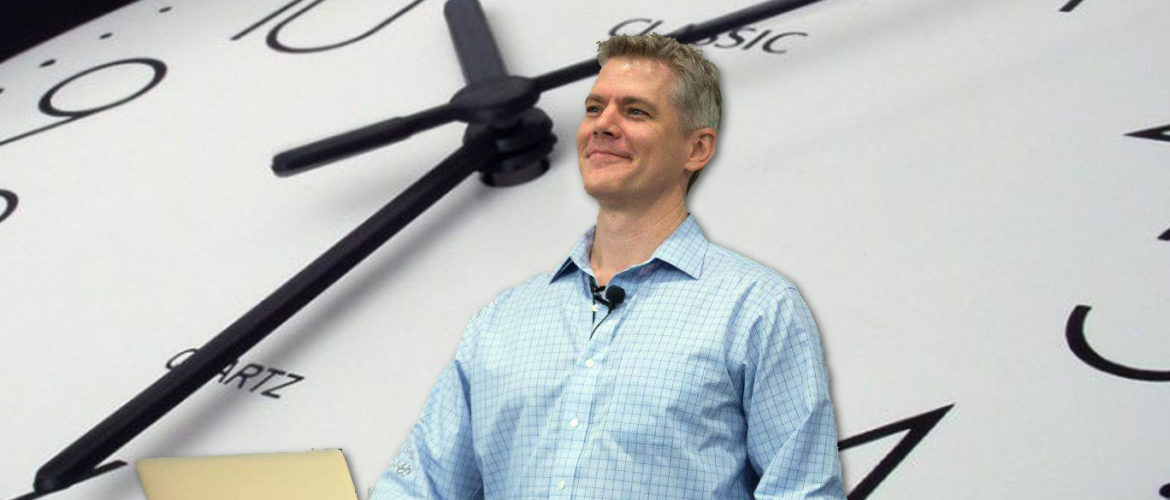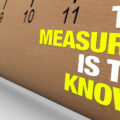Podcast: Play in new window | Download (Duration: 33:23 — 30.8MB)
Subscribe: Apple Podcasts | Google Podcasts | Spotify | Stitcher | Podchaser | Email | TuneIn | RSS
Jonathan Stark is a former software developer who is now on a mission to rid the world of hourly billing. He is the author of Hourly Billing Is Nuts, the host of Ditching Hourly, and writes a daily newsletter on pricing for independent professionals.
Links:
https://www.jonathanstark.com/
https://twitter.com/jonathanstark
https://www.linkedin.com/in/jonathanstark/
http://valuepricingbootcamp.com
Transcript:
Jon Ash – 00:57 – So before we get started, would you mind just sort of telling us about yourself, how you got started in the industry and such?
Jonathan Stark – 01:03 – Sure, I mean it goes way back. My Dad got a, the original IBM PC in like 81 and I started coding basic when I was, you know, really young, maybe 12, 11 or 12, 13 around there, you know, making like Ascii animation art and that sort of thing, you know, go to line 80 and then I got away from it for a long time. Oh really? Fell in love. Electric Guitar. Did that for a long time, but it always, I kept getting pulled back into computers. Even when I was in a band, we needed somebody to manage the mailing lists, so I got a laptop from somebody in an access database on it and I was doing mail merges and I’d go to Kinko’s and print them out and send them actual stamps in the mail. For years I went to Berkeley. You’ve got a music degree and for years I did the musician thing, but always I was doing computers in the background, whether it was for postcards or for, you know, freelance gigs, doing like quark express, it know to build catalogs, paper catalog.
Jonathan Stark – 02:01 – So you can tell them I’m a little bit gray, you know, going back to computers in the nineties, a pre internet stuff. And eventually I, I landed a job, um, I converted sort of a freelance job into an in house job at Staples headquarters in Framingham, mass. I worked in their advertising department and I was a dba, so database stuff really loved it. It was super into databases. I came in through access and filemaker started sql. And then around 2003 I went out of my while, I didn’t go on my own, but I left there and I went into a boutique, a filemaker from really successful one in Atlanta, moved down there and ended up managing that place. I was the vp there, usually around 10 to 15 developers that all billed hourly. And we made custom database software for all sorts of clients all over the world. Big, small and in between.
Jonathan Stark – 02:59 – Uh, and while I was there, I know it was my job to make sure the hours, get all the developers get your hours and get you hours and we have to send out invoices or we’re not going to make payroll, you know, you know, I spent tons of time talking about hours, although we talk about is our. So I would say that was the person who, one of the, one of the main people who would do estimates for new clients. So like, uh, we think is going to be this many hours. And then that many hours later we’d be halfway done. So they’d be yelling at us and we’d be like, well, you know, these, uh, you know, they’d be like, why? Why was this, why did this take so long this week? And it didn’t take that long last week. And we just talked about hours all the time. A building internal systems to track hours and turn an invoice hours, hours, hours. We get to the point where I was, I was at a sort of an impasse because it became evident that our best to developer who was really fast wrote Immaculate Code, could jump into the most complex customer situation and just get it immediately and bang out a solution was pretty much losing us money
Jonathan Stark – 03:58 – because he had the highest salary. He was an amazing developer and a great guy and we build them out at the same rate we build everybody out at. And we could. We could barely keep them busy because he was so fast. And then our most junior person who was basically an intern was really slow. Needed a lot of help, a lot of rework, a lot of refactoring. But he was a delightful person and his customers loved him and he kept them perfectly. happy and he made almost pretty much exactly half of what our best guy did. Same hourly rate, took them twice as long. So we’re making like four times the money on an intern basically. Then we were on a worldclass developer and I was like, this something’s wrong here. This can’t be right. And it took me. It’s amazing to think back on it, but it took me a solid two weeks of thinking about the problem before it even occurred to me to think about not billing by the hour and using a different approach. And if you change that one thing, which is a big thing, but if you change that one thing, everything falls into place, you know, like all of a sudden your best guy is actually making you the most money, you know, so that, that would, that seemed to make a lot more sense to me.
Clayton Hunt – 05:08 – I’ve certainly thought about that before. You know, the, the small consulting firms are almost encouraged to be inefficient.
Jonathan Stark – 05:16 – I would say. I would take the almost out of there.
Clayton Hunt – 05:20 – I mean, it really, really pays to to not be that great at your job and and those kinds of situations which really stinks for the, for the clients. You end up with really bad relationships.
Jonathan Stark – 05:30 – Yeah. Why would you ever upgrade your computers if you’re getting paid by the hour?
John Callaway – 05:33 – The other issue with that is also that as humans we’re inherently bad at estimating before estimating and billing and and setting expectations to our clients that this, this project or this feature is going to take so many hours, so many hundreds of hours, and then if you blow that estimate just sky high and and, and ended up billing them twice as many hours for the same as essentially the same amount of work, then they’re going to be very unhappy with you.
Jonathan Stark – 06:01 – Yeah. I’m sure anybody listening who’s bill by the hour for a big project has had that experience and then it turns into this thing where maybe the client doesn’t blame you. Maybe they know that they’ve, you know, dragged the scope all over the place and they’ve changed the goal. Posts are moving posts. Maybe they know that and they don’t blame you, but they’re still not happy about the investment. They still would potentially regret the whole thing because it ended up. It could certainly have ended up costing more than it was even worth to them, but once they’re that far down the path, by the time you realize that there’s a problem, it’s you know, you’re halfway or more than halfway into a project. So there’s this like, wow, I guess we might as well just finish it now because if we kill it then we lose all the money, but if we keep going, we’ll probably lose less money. So it’s a question of how do we lose less money in the end of that. It’s not like it’s just a bad emotional situation all the way around.
Clayton Hunt – 06:53 – Yes. terrible question I asked you should be asking how can you make the most money? Not how can you lose the light the least amount.
Jonathan Stark – 07:00 – And when I talked to people who bill by the hour, almost everybody doesn’t really bill by the hour. They’re certainly not strict about it. They usually are, you know, not charging client the client for say, researching something that they feel they should have known, some sort of, you know, like a nuance of react or whatever that they feel like, oh, I should’ve known that I can’t build them for learning react or um, uh, there might be some thing about the customer’s industry that they think is no big deal. They underestimate the business logic of a particular thing and they didn’t really work it into the estimate and they feel bad about it. So they don’t, you don’t put those on the time sheet. They don’t put those on the invoice. So straight up, if people think something took too long, like maybe I’m a, you know, maybe I think I’m a hot shot laravel coder and I look at a task on my list and I’m like, ah, that should take me about an hour and ends up being some surprises and it takes six hours. And I just personally as a laravel crafts person, I think, uh, that shouldn’t have taken me that long.
Jonathan Stark – 08:00 – It’s not fair to them for me to build them for the six hours that really should have taken me one hour, so most. Most people who bill by the hour eating hours all over the place anyway of their own accord, nevermind the ones that they forget to log, and then at the end of the project, if it’s over, then you can always. There’s always that conversation where the the consumer turns into a micromanaging nightmare, you know, client from hell type of thing because you’re gone, you’ve gone way over estimate, so they start to lose confidence in you and they start micromanaging every little thing. They go over every single invoice with a fine tooth comb and now you’re talking about hours almost. You know, people like I should start billing for the conversations we’re having about ours, you know, because they start takes up, takes up so much time. So you end up eating hours for a million reasons because intuitively we know as people that there’s like a fair, like there’s a fair, there’s something as fair and something’s not fair. So you’re probably not already in a very mercenary type of way. Billing for all your hours, so you know, maybe maybe making that an exquisite thing instead of an implicit thing is something to think about.
Clayton Hunt – 09:04 – So that makes me think of, um, and I don’t know if you call it this, but essentially fixed billing and a years ago fixed billing was, was looked down on from the, from the consultant side because I mean as, as John pointed out earlier, humans are really, really bad at estimating things, you know, we’re, we’re okay with relative estimates, but going, oh that’s going to take three months were really, really terrible at that. And the problem that a lot of people have said with fixed billing is that if you say it’s going to take three months and it really takes six months, then you are eating that, that three months of money that, that you could have had one is, is what you’re suggesting a do you consider it fixed billing? And two, how do you, how do you handle the blown estimates?
Jonathan Stark – 09:49 – Yeah. Great questions. So one thing I want to point out is the difference between billing and pricing. So what I’m talking about is pricing. Billing is something where you, you sort of back your way into a price at the end of the project. So the price ends up being however much money changed, hands over the three to six months, ends up that the price was 100,000 dollars. We estimated it was going to be $50,000, but we were wrong. So the price, the ultimately paid was 100,000, but nobody ever priced as a verb. Nobody ever priced that project in, merely estimated it. So what you’re talking about is fixed pricing and, and I’m a huge fan of fixed pricing, but there’s two main ways to calculate a fixed price and the way that most people do is what gets them into the trouble that you’re describing. So folks who have attempted fixed pricing on projects almost always get burned because they calculate the price based on time and materials. So they essentially do an estimate and then they tack on some random percentage for project management, you know.
Jonathan Stark – 10:46 – So they say, oh, it’s going to take me 100 hours, be x dollars per hour, multiplied by 15%. Tack that on top. And then give that as a price. You’ve got a disaster waiting to happen there because people are bad at estimating how much time it’s going to take to do something and they’re bad at even knowing what they’re going to do. Probably nobody here does waterfall projects, probably no one, maybe someone listening just waterfall projects, but that’s probably not what we’re talking about here. It seems like that’s more of a thing of the past and it’s more common to do kind of agile type development where you’re learning as you go and you’re correcting along the way. The alternative is to base your price on the value of the business outcome to the client instead of how much work it’s going to take you to do. And what that means is finding out in advance before you start work at all, before you even present a proposal, you find out what they’re trying to achieve. No client needs more code quick. We need more code.
Jonathan Stark – 11:47 – They need code that’s going to do something for them. They think that it’s going to have some kind of business outcome. This is a b to situation. We’re not giving you, they’re not commissioning you because to write a bunch of Immaculate Code that they’re going to frame and hang on the wall. They want, they don’t care about the code. I mean, yeah, they recognize that you’re going to have to code to build the new customer service dashboard or they don’t care about that. They want the customer service dashboard. So if you’re an amber developer and they say, Hey, we’ve got an ember APP, uh, we understand that you do ember development, uh, can we talk about hiring you to do some work for us? And the question of what do they want you to do? The word do is super vague. It can mean something. It almost surely means something different to the ember developer than it does to the person who’s hiring the ember developer. But it’s. But who knows, there’s just so many assumptions going on. Like the ember developer probably thinks they’re going to be hired to do for development, but the client doesn’t really want ember development. It’s as this sort of abstract concept they want.
Jonathan Stark – 12:47 – They probably want a particular feature built or they want to, they want to be able to release code more quickly or they need some new module or something like that, which is closer to the business desired business outcome, but if you keep talking to them, he’s like, well, why do you want that? Why don’t you not do that? Why don’t you save all this money from hiring some inexpensive like me to build that? What’s the, what’s in it for you? You know, I only want to work with customers who are gonna get a positive ROI from working with me, so then we can work together for a long time. So why do you care about this customer service dashboard for example? Well, you know, the car, the customer service people are just totally on the CEO’s back and we really want to get them off the CEO’s back. Oh really? Why are they upset about something? Yeah, they can’t get anything done. They can’t respond to these queries and they feel bad and it’s bad for the brand and say, oh, okay, so the morale is bad. Are they? Do they quit? A lot? Do you have to constantly replace them A. Yeah, a little bit, but it’s more that they’re just upset that they can’t resolve customer issues as quickly as they know is possible. Oh, so the customers are starting to feel the pain of this?
Jonathan Stark – 13:47 – Yeah. Oh, are you losing any customers over? Well, probably they don’t want you to sit there and code for them. They don’t want you to sit there at the computer and just press keys. They want their customers to be happier. They want their brand to be better. They want their employee morale to be better. There’s something in there somewhere that clients want and almost always you can attach a rough idea of what that might be worth to a particular business. And if you articulate that and say, all right, so what I’m hearing is x, y, and z, you know, if you lose, if you lose one customer per year for a company like you, that’s got to be at least a $50,000 hit. We can solve this problem a bunch of different ways, including our development. But there’s some other things we could probably do. It’s tough to say, but we could look at the code base and find out might be an easy fix here. Now all the sudden you’re talking about what it’s worth to them instead of how hard it’s going to be for you to do it, how much typing you have to do or how many contractors you’re going to have to pay to execute this.
Jonathan Stark – 14:43 – So all the sudden if you’re thinking like, okay, this is probably, let’s say it’s a $50,000 problem for this client, you know, annually. All right, so I can. I can come with a few prices based on that. They have to be lower than that. I can’t give them an estimate for $150,000 for this $50,000 problem. It doesn’t make sense. So I can give him a price of like a $5,000 thing, maybe $12,000 thing and maybe a maybe a $50,000 thing of $45,000 thing. Okay, there three ways we could tackle this problem. The lowest one is the least likely to succeed, but it’s low hanging fruit. We can do it really quickly and it’ll move the ball, you know, down the field for you, or we could do this cooler thing, it’s not soup to nuts, but it’s more likely to succeed, more likely to have a positive impact in the near term. And then you know, the soup to nuts Mercedes option here where we basically come in, take over all of the, you know, remove all the bottlenecks that, you know, your staff’s got a job that they need to do.
Jonathan Stark – 15:40 – They don’t need to be working on this project all day too, so we can come in a staff it up a little bit, remove the bottlenecks and you know, achieve these outcomes in this amount of time. You know, roughly for this amount of money, it’s now the sudden you’re talking like a businessperson about, you know, them investing in their business to achieve this desired business outcome. And you’re not talking about like, oh, how many, what’s the object model gonna be like, and how many screens are there going to be? And what color do you want the logo to be? None of that stuff matters. You can figure that out later. To wrap that up. I’m talking about a different way to come up with a price for a fixed price project. Almost everybody does time and materials. I think that’s what you were alluding to earlier. This is a completely different way. It’s based on value and when you do that, it changes the entire conversation before the sale. When you’re talking about hours, what do you ask you ask like, oh, how many lines of code are there now? What plugins are you using? What gems are you using? Who’s the host?
Jonathan Stark – 16:39 – You’re. You’re asking yourself all of these problems that you’re trying to calculate how hard your life is going to be and you’re not thinking at all or very little about how what you do is going to make the client’s life better, but if you come at it this other way, that’s all you think about. You don’t even think about what you’re going to do until you have some prices setup and then you’re like, okay, what can I do for these people for $10,000 that would make their life better? So then you can think about, it’s not a question about estimating the time, it’s about backing your way into a scope instead of backing away into a price.
Jon Ash – 17:07 – I think that makes a lot of sense. And I think that it’s, I’ve definitely seen places where it’s missing. Uh, we’re, we’re, we’re, you’re not kind of calculating that scope and, and kind of approaching it from the business value perspective, but what happens when you have to, but you aren’t going to be able to fulfill that project. The scope is larger than something you’re gonna do you’re gonna now have to hire people, be able to do this at what point? So at some point their time and materials or do you hire them only through the smaller scope part of the project that, that they’re going that they’re going to, um, be working on?
Jonathan Stark – 17:44 – I’ve seen both. I think both can work. The thing that a lot of people can’t get their heads around when, when we talk about this sort of thing is that most people are used to razor thin margins when you, when you have. And if this project, whatever the project is, is not that valuable to the client, you can’t take it like so there’s a possibility like value pricing cuts both ways. So if you come in and they say, Oh, you know, we really need this customer service dashboard because we can’t because we’re losing clients because of our bad customer service and this dashboard we believe having that would change that and that’s the only word and it’s a small company and it’s maybe a one person company or a two person company and they haven’t got any money and the clients that they’re talking about or paying them $9 a month and you see that it’s a giant amount of work for you. You can’t just say, oh well that’ll be $100,000. And obviously because the value is not there, so you just pass on the project because there’s no. I mean maybe there’s some tiny thing that you can do for them.
Jonathan Stark – 18:44 – Maybe you can point them at some. You know what I mean? So for you start with the value roughly and you say, Oh this is definitely a million dollar million dollar problem that we’re solving here, or this is definitely a $10,000 problem that we’re solving here. So whatever price you come up with has to be below that has to be under it. And if you want to make it a no brainer, you make it significantly under that. So now what do I do if I have, I can’t. There’s maybe some piece where I’m not an expert. Maybe it’s um, oh, I don’t know, like a, a D3 visualization that needs to be. I don’t do D3. I didn’t know anything about it. I don’t, I know react maybe and I just don’t. I don’t know anything, you know, and I don’t feel like figuring it out. I could go hire someone for that or not. I could, sorry, I can hire them by the hour. Almost. Certainly I could find someone to do that or I could give somebody say, Hey D3 people, I’ve got a thousand bucks for anybody that can do x, y, and z, and people can throw their hat in the ring. You could do it either way, but the thing that has to be there for either one to work is a gigantic margin on your side.
Jonathan Stark – 19:45 – So if the project is going to take you a week and it’s a million dollar problem and you say to the client, look, we guarantee we can make this work and that you’re going to see a positive return on investment. It’ll be 100,000 dollars and we can have it done in a week. Then you’ve got all kinds of money to play with to go out and it doesn’t matter if you pay them hourly because you’re not going to lose money because there’s so much upside. I say so yeah, if most people are used to thinking about razor thin margins because people never tack on profit. They just think like, oh, you know you to pay me 150 bucks to get out of bed in the morning. I’m not doing anything for less than a hundred 50 bucks an hour, but they don’t. That to me, that’s their cost. That’s the cost of them spending an hour engaging in activities on the client’s behalf. No one really thinks about profit like they just think, oh, the some portion of that profit I guess or or they think it’s all profit, but it’s really not.
John Callaway – 20:43 – I would say a fair amount of our listeners are are working in perhaps a corporate environment, thinking about taking on additional work side work or or just breaking out into a solo entrepreneurial role and and going out on their own is how do you make that transition and how do you start to change that personal mindset? Because as, as corporate developers are usually answering the question of how long will this feature take you to make the value and the cost conversations are often happening outside of, of any meeting that you’re involved in. So how do you. How do you change that mindset and how do you start having those conversations with any potential clients?
Jonathan Stark – 21:23 – Good question. Big Question. So when I think back to when I was in house, if I was going to do it over again to go out on my own, there are a lot of things I would do differently and one of the things I would do differently for sure is I would start building an audience. You could call it building an audience or leading a tribe. Seth Godin would say, but I would start doing that while I was still in house. I would and it’s, and I’m not talking about just getting a million twitter, twitter followers. I’m talking about like finding people who need my expertise, who, whose lives will be improved by my expertise in giving away to them for free. So maybe it would be a mailing list, maybe it would be a blog, maybe it would be webinars, but it would be something where I could sort of put my expertise into the world and find out if anybody values it or if they could even connect the dots from what I do to what they need.
Jonathan Stark – 22:14 – I described like a imagine talking to a, a physical therapist. He said, oh, what do you do? It’s like, oh, I, you know, a gym, my thumbs into people’s muscles until they scream. It’s like, okay, that’s one way to talk about it. That’s the way developers usually talking about what they do. The other way to talk about it is I helped pro baseball pitchers get back in the game after an injury. Oh, this person does the exact same. Like in their mind they are doing the exact same thing. They’re jamming. They’re thumbs into somebody calf. But that would be weird for pitcher. But okay. Not really a sports guy, but uh, but they’re describing the activities that the first example there, describing the activities that they engage in. First I go like this, then I go like this, then I go like this and they neglect to talk about why or what the benefit is or who they might they who they might do it for, but if you, if you don’t even talk about physical therapy and you say, oh, I, I help professional pitchers get back in the game after they’re sidelined by an injury.
Clayton Hunt – 23:15 – Oh really?
Jonathan Stark – 23:16 – I know a professional pitcher. I know somebody that works with the Red Sox or I know Bob, maybe I should introduce you, is a completely different, completely different discussion, so the thing I would do if I was still in house is I would figure out that what is that thing? How can I take my calf rubbing and put it in a way that the most value, the people who need it the most, the people are going to value that expertise the most are going to benefit from it. I would figure that out and try to start attracting those people with just free content, podcast, Webinar, mailing lists, whatever.
John Callaway – 23:49 – If I remember correctly, you were focused primarily on mobile banking, is that correct?
Jonathan Stark – 23:54 – Yes. So in 2010 I wrote a book called building iPhone apps with html, CSS and javascript for O’Reilly and it was really one of the very first of its kind of tackled that. And it was perfect, was just lucky. I was perfect timing and I was positioned sort of defacto as a, um, as an expert at that when it was still a very small pond. There were very few people doing that. Iphone had just come out and people were really starting to take it seriously. So for a long time I was doing just general, not general, I mean it was specifically mobile work, but it was for any industry, so mostly customer facing retail, but still there were, you know, Cisco, Intel, Nokia, uh, there were intel internal types of projects that are external projects and that I would get brought into help them decide whether or not they should use like an html, css, javascript plus phone gap type of approach or just go pure mobile web or go native cross platform. Like, Oh, do we use a titanium itself?
Jonathan Stark – 24:55 – Celebrator or like Xamarin or like, should we use any of these or should we just go pure native on both platforms these days. People would be asking me these questions about react if I still did it, about, I guess it was what year is this? Twenty 18. So I think in 2017 as an experiment I’ve focused on specifically on a vertical to explore that industry. And it was credit unions because I had um, a credit to one or two credit union clients at the time. I can’t remember. And so I went into that space. I made a lot of connections. I researched it and ultimately I decided that it wasn’t going to be a great fit because the, the industry is extremely risk averse and what I was asking them to do was perceived as extremely risky, a big investment, a big change in the kind of thing that they would rather get from a, um, honestly, a third party vendor just like give us something off the shelf that we can pay for by the month. So if I was going to actually come, if I, if I was going to stay in consulting and stay in the financial space, I go after the third party platforms like Pfizer for example,
Jonathan Stark – 25:56 – it’s one of the biggest successes in the entire world and most people outside of the industry have never even heard of it, um, but that’s where all the money is and they’re in desperate need of mobile user experience. So if anybody out there is mobile ux expert go after Pfizer because they need it. Sorry Pfizer.
John Callaway – 26:13 – So you essentially set yourself up as an expert in a narrowly focused vertical and took the, the broader concept of mobile web development and really narrowly focused to make that conversation a little bit more focused and making sure that you’re picking the correct clients and that you were able to deliver the value that they need.
Jonathan Stark – 26:34 – Right? So it’s just another way to sort of optimize your delivery in and decrease your it to optimize your marketing marketing and decrease your costs. So now I, if I can walk into a credit union and understand their regulatory environment and how they’re going to have to get things approved and what their board is going to say, I can like boom, boom, boom, boom, much more quickly than somebody who’s just like, I’m smart, I can learn the constraints of the credit union industry on the fly. So you can imagine in on my website and then in a proposal or a sales meeting and then in a proposal and then in the actual delivery of the project, I’m going to have a huge leg up over anybody that is just like, I can hit the ground running. I’m smart, you know, it’s just, you’re just not even speaking their language. So there’s a, there’s automatically going to be a trust bond between me and a potential client over somebody who’s just a general web developer, general mobile web developer. But it does just one way to think about it.
Jonathan Stark – 27:31 – Like there, there are plenty of people have a very strong horizontal specialization where they’re just well known as being a global expert at react native or uh, you know, I have a student who does, um, calls himself a cloud economist and he helps people reduce their horrifying aws bills. So he picked, he picked a space where there’s a clear tie to the bottom line, he can make an impact extremely quickly. He just comes in, runs a sort of set of diagnostics, he does interviews and he’s got this outcome and it’s like, oh, you can save a million dollars a year, here’s, here’s how you do it and if you want to, you know, if you want me to, there might be some development effort, some engineering effort involved to make these changes, but here’s how you could do it. And oh, by the way, if you want me to oversee the project, when you do make those changes, then we can talk about that too. So yeah, I mean, you can do really either, either way, it can be horizontal, it could be vertical.
Jonathan Stark – 28:25 – You could, you could focus on a particular demographic. Like people who believe that global warming is real, or people who don’t believe that global warming is real. You could, you could pick any kind of demographic, psychographic, vertical, industry, vertical, or perhaps horizontal. Just just be out there like an expert at, you know, react, let’s say.
Jon Ash – 28:45 – Very cool. Well thank you. Um, uh, one of the, one of the things we kind of also try to focus on is just advice specifically for people who are kind of getting started. Uh, and, and maybe this would be, we kind of talked a little bit about getting started as an independent. Would you, I guess maybe I’ll ask the question, would you recommend that people getting into the industry tried to jump into freelancing from the beginning or would they, would you recommend them sort of more try to take a traditional approach or does it matter?
Jonathan Stark – 29:13 – Hard to say it’s kind of case by case. I think that, um, when I was in house I thought I knew everything about filemaker up, down and sideways. That was like my area of expertise. I had a high degree of confidence. You could call it arrogance maybe that I was okay. That was the bee’s knees, it filemaker, and then I went into a consulting company where we had all sorts of different clients instead of my essentially one client that I worked for and I was like, Oh yeah, I’ve never done this on pc is I don’t know about filmmaker on pc. So an entire half of the industry I had no clue about and there were significant differences in that sense. It probably would have been A. I guess what I’m saying is I learned a lot. I thought it had nothing or little left to learn. It turns out I had tons left learn, so it’s kind of an idiot. I had some skills, but really not that, not that many. And when I had my eyes opened to that by going in house at a boutique consultancy, I also learned how to deal with clients so you know much, much more in a more professional way than I would have had to add a job job.
Jonathan Stark – 30:16 – So it’s hard to say like if you, if you know that you aren’t there yet, freelancing is a pretty hard road. You’re kind of asking yourself, you’re throwing yourself in the deep end of the pool because when people think, oh, I’ll just start freelancing. It’s like, well you just started a business and part of businesses marketing and part of businesses sales and part of businesses, client satisfaction and all that stuff. And if you, if all you know is your craft, that’s a lot to learn it, which isn’t to say don’t do it, but I think for me a safety net for me if I was going to do it over again, would be to have a connection with a group of people who valued what it was that I did. And that means figuring out how to talk about what I do in a way that’s valuable to people who don’t do what I do. And figuring that out is huge and you can start doing it at any point. So I would really start trying to attract an audience as early as possible.
Jonathan Stark – 31:14 – And it’s easy to do as a side hustle when you’re getting, you know, you’ve got a salary coming in and it’s fun. So that’d be the first thing I would do. Possibly I would go in, in house somewhere else at a true consulting firm before I left my. Sorry, immediately after I left my employer and before I started freelancing. But you could potentially skip that if you had a few, a big audience in your. You were very clear on the value you delivered and you have tapped into a really a market that had lots of capital. You could probably, you could probably do it.
Jon Ash – 31:45 – Awesome. Do you, uh, I believe you’re on Twitter. Is there other places that people might be able to find you?
Jonathan Stark – 31:51 – Sure. The best place to get in touch with me is through my mailing list, which you can read more about valuepricingbootcamp.com gets into all the things we’ve been talking about here today and a lot more detail. Um, but yet I’m also on Twitter and I don’t know if I’m embarrassed to admit this, but I’m becoming much more active on LinkedIn for some reason. LinkedIn is turning into a kind of a fun place to hang out. I mean, I used to be like, oh, but it seems to have changed in the last couple of years. It’s, it’s much more fun. So LinkedIn, Twitter, but my mailing list is the place you really want it really want to interact. I constantly in conversations with my list.
John Callaway – 32:28 – Thank you, Jonathan. I appreciate you coming on the show
Jonathan Stark – 32:30 – anytime. My pleasure.
“Tempting Time” by Animals As Leaders used with permissions – All Rights Reserved
An International Speaker, Author, and Microsoft MVP, John has been a professional developer since 1999. He has focused primarily on web technologies and currently focuses on C# and .NET Core in Azure. Clean code and professionalism are particularly important to him, as well as mentoring and teaching others what he has learned along the way.









